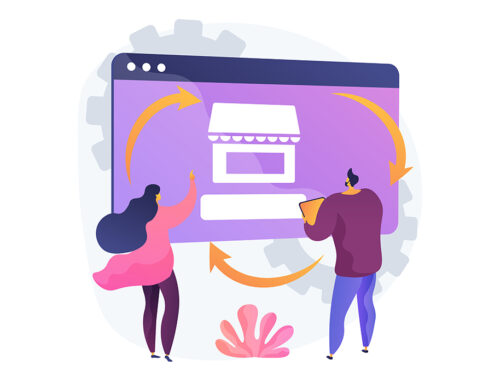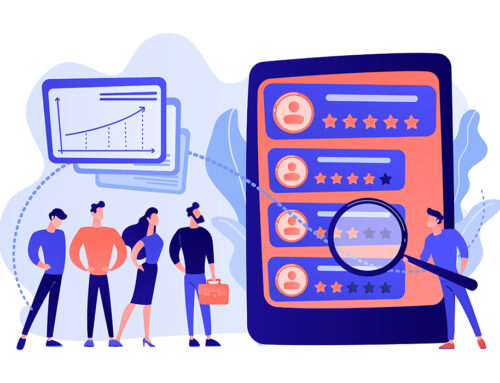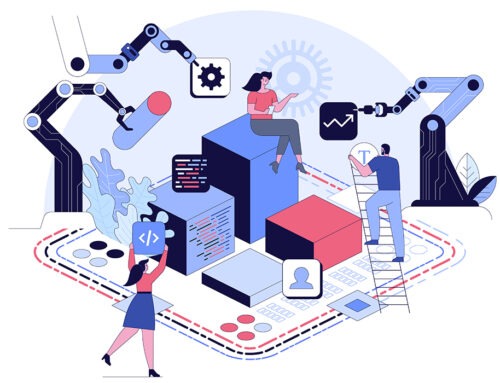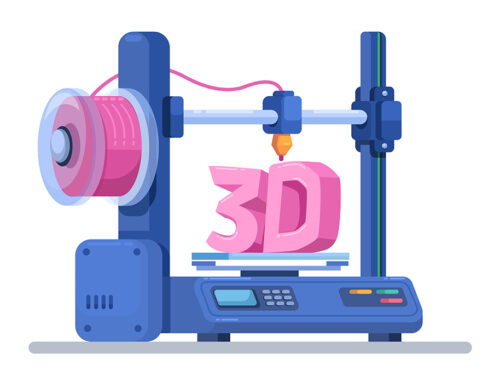Over the last four years, Copperberg has worked with Valtech to collect data and insights from the leaders in the B2B manufacturing sphere. The report has grown quite a bit to represent 35% more respondents, the majority of whom bring in over 5 billion in revenue.
Author Nick Saraev

Photo: Freepik
Herbert Pesch and Vincent van Hellemondt from Valtech took to the stage at our recent E-Connect Power of 50 event to share some of the key findings. They shared some of the major takeaways from the report, as well as insights into how your company can embrace digitization, e-commerce, and more.
The Goals of Digital Transformation
While many companies we spoke with have been walking the road of digitization for some time, their reasons for continuing to invest were enlightening. They included
- Revenue Growth
- Increased Efficiency and Cost Reduction
- Boosting Customer Satisfaction
The biggest focus is on improving processes, and the lives of existing customers. How companies plan to go about these goals varies greatly, but a few areas of investment came out on top.
- 25% are investing in customer portals and digital service
- 18% are investing in E-commerce
- 15% are investing in data foundation
Many manufacturers are pushing to connect with customers online. This kind of transformation comes with clear benefits and challenges.
E-Commerce
When asked what drove digital adoption, the most common answer was e-commerce. Roughly 55% of new product sales go through traditional sales processes, compared to only 39% of aftermarket sales.
At the moment, only 18% of aftermarket sales are going through digital means. However, the majority of companies name e-commerce as the fastest-growing channel. These numbers are so low because many organisations have yet to give e-commerce the time and energy it requires.
If you want to find success with digital sales, there are a few key enablers that will make this possible.
Personalized Experiences
Rather than focusing on personalized content alone, you must find ways to take your customers on a journey. This involves defining all the information that might be relevant to or about each client.
For example, if you collect data about the assets a customer has, you can jump to interacting with them through your e-commerce channel. This contributes to successful omnichannel marketing because clients will feel like you already know them by the time they get to aftermarket purchasing.
Sales and Client Onboarding
Many companies make the mistake of only implementing an onboarding strategy when they first introduce a platform. This can lead to a platform growing stagnant or scaring away new customers with its perceived complexity.
Client onboarding is a continuous process. It involves promoting actions to attract and engage customers. To accomplish this you should get feedback from your sales teams and your customer base and use that knowledge to keep bringing in new customers and making them feel at home on your platform.
Smart KPIs
B2C brands often leverage data and KPIs far more effectively than B2B manufacturers. Having specific goals and tracking your progress is key to creating changes that last, and to following the trends of the market to attract new customers.
Some KPIs that drive growth include
- Percentage of hit rate on quotes
- Percentage of onboarded customers per segment
- Average order value
The move to e-commerce isn’t only about being more efficient, it is about driving business objectives forward. As one responder stated, “commerce is the snow plough for digital transformation, enabling digital services.”
Digital Services
Lots of B2B manufacturers have huge catalogues of digital services, but many of these services are fairly basic. If you’re only offering things like insights and contact information, order portfolios, or overviews, your services don’t add as much value as they could.
Real value-added services help give your clients what they truly want, more uptime and less maintenance. Finding out what is important to your customers will help you create services that matter. For example, you might offer a configurator that shows potential replacement products that can lower your clients’ energy consumption and carbon footprint.
Overcoming the Challenges of Digital Adoption
There are several reasons why a digital adoption project might fail, but a few came up again and again in the survey results.
- Reluctance to change
- Siloed organisational structure
- Digital ownership
These issues are only going to grow as you expand more. It’s vital that you adopt strategies to fight back against these issues.
Connecting the Silos
Many manufacturers have grown by buying other companies and building new divisions. This has created complex silos within the organisation, with different regions, divisions, and business areas operating independently.
While people often say we need to break down these silos, they still exist. Instead of trying to eliminate them completely, you should focus on connecting them and allowing each silo to have a voice in your digital strategy.
This means actively involving each silo in defining your direction, target customers, and differentiation strategies. While it would be easier to have everything on one platform, failing to differentiate between silos could lead to missed opportunities.
Leadership Involvement
The most crucial aspect of digital transformation of any kind is getting buy-in from the people on the ground floor. If they do not embrace the changes, they won’t happen. However, without leadership support and investment, that cultural shift is impossible.
Leaders should focus on digital performance metrics and KPIs, making them part of the team’s evaluation process. This will show the entire team how important these initiatives are, and encourage enthusiastic adoption.
In Conclusion
When asked what part of their digital transformation journey they regretted, one of the most common sentiments was, “starting too late, executing too slow.” Manufacturing is moving into the digital age at a breakneck pace, and only by making a concerted effort to move forward will you keep up with the times.
If you want to learn more about The Voice of Digital Leaders in Manufacturing and see what is driving companies forward in their digitization, you can find the whole report on Copperberg’s website.






























